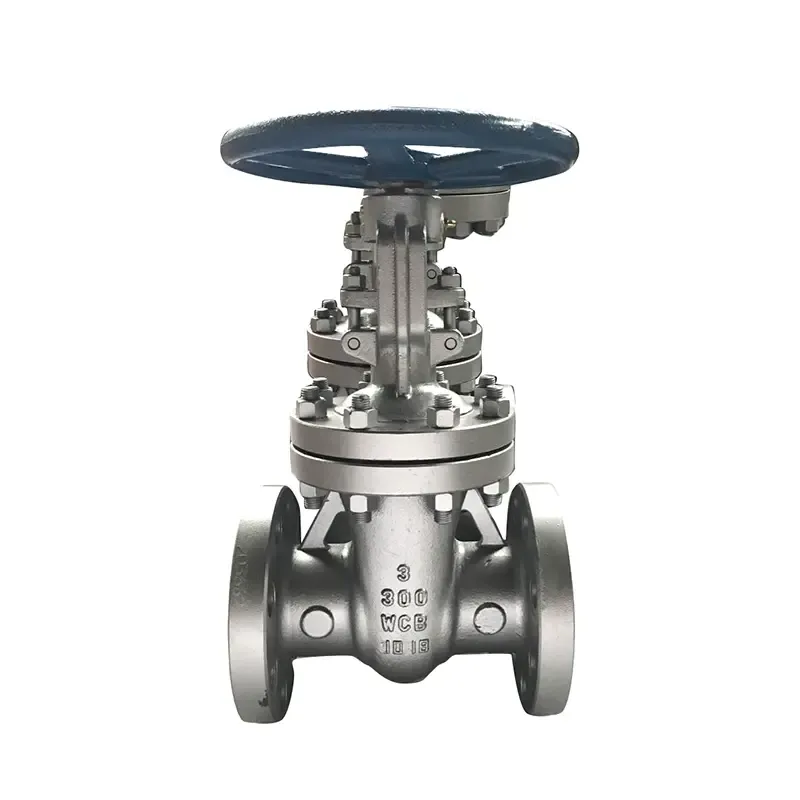What is a gate valve best used for?
2024-11-29
A gate valve is a type of valve used to control the flow of fluids (liquids, gases, or slurries) in a pipeline. It is designed to either fully open or fully close the flow, providing a clear and unobstructed passage when open and a tight seal when closed. Gate valves are best used in situations where a fully open or fully closed state is required, and where throttling or regulating the flow is not the main concern.

Here are the key uses and advantages of gate valves:
1. On/Off Flow Control
- Best Use: Gate valves are most commonly used for on/off flow control in pipelines. When fully opened, they provide a straight, unobstructed path for the flow of the fluid, resulting in minimal pressure drop and a smooth, unrestricted flow. When fully closed, they provide a tight seal to stop the flow entirely.
- Typical Applications: They are ideal for applications where frequent or partial flow adjustments are not needed. These include water treatment plants, oil and gas pipelines, heating and cooling systems, and fire protection systems.
2. Low Pressure Drop
- Best Use: Gate valves are designed to have minimal resistance to flow when they are fully open, which makes them particularly well-suited for applications where maintaining a low pressure drop is important.
- Applications: Common in large-diameter piping systems, such as water distribution, sewage treatment, hydraulic systems, and power plants, where large volumes of fluids need to flow without significant pressure loss.
3. Isolation in Pipelines
- Best Use: Gate valves are often used as isolation valves in systems where it is necessary to stop or start the flow in a pipeline. They are not typically used for throttling or regulating the flow, as adjusting the gate valve while partially open can cause wear, leakage, and erosion over time.
- Applications: Common in systems where valves are opened or closed infrequently, such as in gas pipelines, water distribution systems, fire sprinkler systems, and HVAC systems.
4. High-Pressure and High-Temperature Systems
- Best Use: Gate valves are available in materials that can withstand high pressure and high temperature, making them suitable for industrial applications. They can be found in steam systems, oil refineries, and other harsh environments.
- Applications: In power plants, chemical processing plants, and petroleum refineries, where strong, reliable seals are necessary under extreme conditions.
5. Large Diameter Piping
- Best Use: Gate valves are well-suited for large-diameter pipes due to their design and ability to provide full flow with minimal obstruction. Their design allows them to handle high flow rates in pipes that are several inches or even meters in diameter.
- Applications: Used in water treatment plants, pumping stations, irrigation systems, and other large-scale infrastructure projects.
6. Manual and Automated Control
- Best Use: Gate valves can be operated manually with a handwheel, or they can be automated for remote control using actuators. The manual version is typically used in systems where the valve will not need to be frequently adjusted, while automated versions are used in systems that require remote operation or automatic control.
- Applications: Automated gate valves are often found in oil and gas pipelines, waterworks, chemical plants, and power generation plants.
Advantages of Gate Valves:
1. Minimal Flow Resistance: When open, gate valves provide a completely unobstructed passage for fluid, resulting in a minimal pressure drop across the valve.
2. Reliable Sealing: Gate valves create a tight seal when closed, making them effective for isolation purposes.
3. Long Service Life: When used for on/off control and not for throttling, gate valves can last a long time without significant wear or damage.
4. Versatility: Available in a variety of sizes, materials, and pressure ratings, making them suitable for a wide range of applications, from water supply systems to high-pressure industrial environments.
Disadvantages of Gate Valves:
1. Not for Throttling: Gate valves are not designed for throttling or regulating the flow. Attempting to control flow in a partially open position can cause damage to the valve and the pipeline.
2. Slow Operation: Opening or closing a gate valve can take longer compared to other valve types like ball or globe valves, making them less suitable for situations where rapid response is needed.
3. Wear and Tear: Frequent operation or use in systems where the valve is only partially open can cause damage to the gate and seat, leading to leakage and reduced lifespan.
Conclusion
Gate valves are an excellent choice for on/off flow control and isolation in a variety of systems, particularly in large diameter and high-pressure applications. They provide a full, unobstructed flow when open, making them ideal for pipelines that require minimal pressure drop. However, they are not suitable for applications where throttling or flow regulation is required. When properly used for isolation and in the right conditions, a gate valve can last for many years with minimal maintenance.

